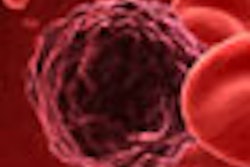The University of Rochester Medical Center (URMC) and Lucifics, a photomedical technology start-up company, have been awarded a grant from the National Institutes of Health (NIH) to develop and test prototypes of a new generation of medical devices to treat oral cancer.
URMC and Lucifics have been awarded a Small Business Technology Transfer Phase I grant from the NIH's National Cancer Institute (NCI) to build and evaluate single-use photodynamic therapy (PDT) devices, the university announced. The partners will collaborate on the development of an initial set of devices that are anticipated to be ready for clinical testing within a year. The devices will be tailored to treat common oral cancer sites, including the lateral border of the tongue, ventral tongue, gumline, and floor of the mouth.
Lucifics -- founded in 2011 by University of Rochester alumnus William Cottrell and based in Massachusetts -- is developing a new technology that more effectively focuses PDT on cancer cells and shields other parts of the oral cavity from the reflected light that can cause the drug to activate and damage healthy tissue.
"Photodynamic therapy has a lot to offer patients suffering from cancer of the oral cavity, but the complex anatomy and the difficulties created by scattered treatment light illuminating and potentially damaging sensitive normal tissue present significant technical challenges," stated Thomas Foster, PhD, a professor of imaging sciences at URMC, in a press release. Foster's lab has been working on various aspects of photodynamic therapy for more than 20 years.



















